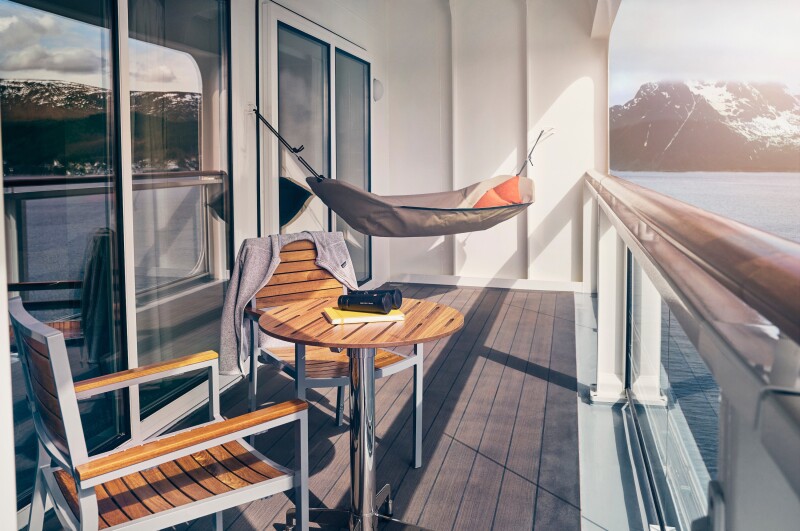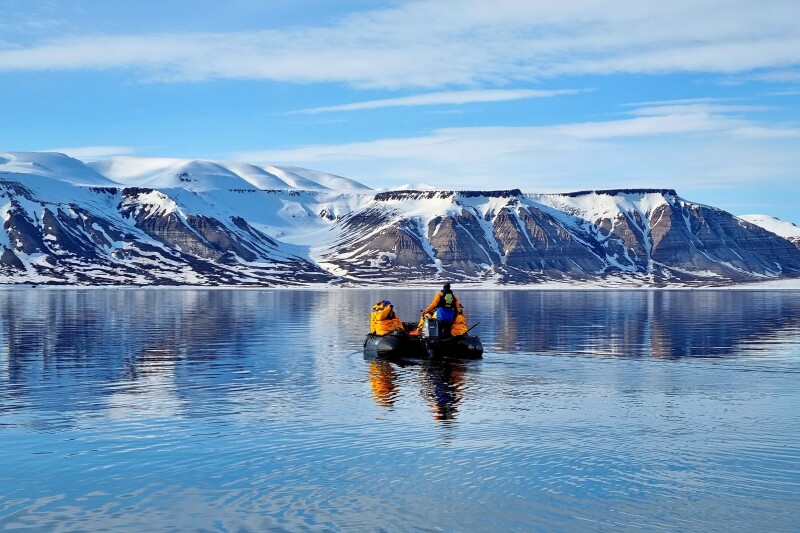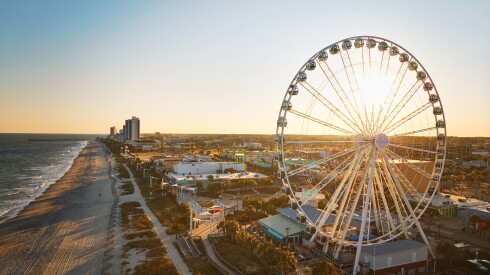On a recent June morning sailing in Svalbard, it was time to set down our silverware and abandon breakfast—polar bears had been spotted. I raced to the bridge of the National Geographic Endurance and peered out the windows at the front of the ship to see two polar bears. Earlier during the 10-day Svalbard expedition with National Geographic–Lindblad Expeditions, I had spotted polar bear scat on a hike, which our guide pointed out was packed full of white reindeer fur. That morning, I had watched a large piece of ice float by my cabin window with a line of massive polar bear tracks crossing it. After seeing so many signs of bears in the area, I was thrilled that we had finally found the beautiful creatures.
Since it was June, we were required to stay at least 500 meters (1,640 feet) from the bears, under new regulations that were enacted in the Norwegian archipelago of Svalbard on January 1, 2025. The new rules are intended to protect Svalbard’s fragile Arctic environment and wildlife. In addition to remaining at a mandatory distance of 300 to 500 meters from bears, according to season (with stricter protections from March to June when the bears are more vulnerable), other new requirements include a ban on drones in protected areas, limitations on tourist operations at cruise ship landing sites, and a maximum of 200 passengers on ships within protected areas.
Given the new regulations and questions around how and whether they would impact viewing opportunities, we were thrilled to see the first couple of polar bears, as well as the others we would spot over the course of the sailing, including a pair of bears feeding on a bearded seal carcass, and bears roaming on the ice. Every time we spotted one, the crew was fastidious about doing everything they could to avoid disturbing it, including lowering the ship’s waving flag and halting exterior moving parts.
Last year, 67,000 cruise ship passengers visited Longyearbyen, the administrative heart of remote Svalbard, including 29,000 people on expedition cruises and 38,000 on conventional ocean ships, according to data from tourism marketing organization Visit Svalbard. Since Svalbard is heavily affected by climate change—it is warming at six to seven times the average global rate (leading to rising temperatures on land and in the ocean, declining sea ice, melting glaciers, earlier spring seasons, and thawing permafrost, among other impacts)—leaders are seeking to better protect the Arctic archipelago from the impacts as well as from increased visitation.

Expedition lines like National Geographic–Lindblad encourage guests to use binoculars and cameras with strong zoom lenses so that they can see and photograph the polar bears from a distance.
Courtesy of National Geographic-Lindblad
When the new rules were first announced, some people were concerned they would make it more difficult to spot, view, and photograph wildlife, while others wondered how much they would move the needle for polar bears and the environment. However, operators are focusing on educating visitors about the importance of protecting Svalbard, while managing expectations and encouraging guests to prepare by, for example, bringing longer camera lenses.
“Guests are still seeing polar bears, but the distance is farther away than it was in the past,” says Jon Engenes, head of communications for the Association of Arctic Expedition Cruise Operators (AECO), which represents companies that run Arctic expedition cruises along with other stakeholders in the industry. It has about 80 members, with approximately two-thirds of them operating in Svalbard.
“Nothing has changed in terms of success rate [of spotting polar bears] compared to the previous years. There’s the same amount of bears out there, and we have the same amount of effort in scouting [for] the animal,” says Michele D’Agostino, cofounder of U.K.-based Secret Atlas, which leads small-group trips to the polar regions. “We’ve been working a lot on managing expectations. I cannot name a single guest that was surprised of the existence of the regulations. They’ve all been aware of it. They all knew the plan.”
During a late July Svalbard trip, Jason O’Keefe, senior director of guest experience and corporate communications for luxury expedition line Atlas Ocean Voyages, reported that guests saw 14 polar bears over the course of an 11-night sailing. He says that the company communicates with guests soon after they book their voyage, providing information about the regulations, sharing the availability of binoculars on board, and encouraging photographers to bring long camera lenses to get close-up shots. “We highlight that there are new restrictions that limit close-up views of the wildlife. However, we talk about how they can still enjoy seeing the wildlife with some preparation,” O’Keefe says.

Beyond providing the opportunity to spot polar bears, Svalbard is a stunningly beautiful destination to explore.
iralgo74/Shutterstock
Svalbard is known as one of the best places in the world to see polar bears, which are a huge draw for many visitors. Churchill, Manitoba, in Canada is also one of the world’s best polar-viewing destinations, and I saw Churchill’s bears for myself on a 2024 trip with Natural Habitat Adventures. In Churchill, much of the polar-bear viewing is conducted from specially designed vehicles with massive six-foot tires that keep people and bears separated as they roam near Hudson Bay in the regulated Churchill Wildlife Management Area, where polar bears congregate in late fall to wait for the water to freeze so they can head out and hunt seals.
The ship-based experience in Svalbard is different from land-based viewing in Churchill, though both destinations provide exceptional opportunities to spot the impressive white predators, which are threatened by climate change: The sea ice they require to hunt, travel, and breed is melting and disappearing. However, both locations also offer a variety of other things to see and do. In Churchill, visitors can spot Arctic foxes, go dogsledding, and witness incredible displays of the northern lights if the timing is right, as Churchill is located in the auroral oval and is one of the best places on the planet to witness the phenomenon. In Svalbard, visitors can also spot walruses, appreciate incredible icy scenery, and look for the northern lights if there is solar activity and the weather is cooperating.
“Expedition cruises around Svalbard are not just about seeing polar bears,” AECO’s Engenes says.
Expedition ships generally operate with somewhat flexible itineraries, adapting to what they find and encounter along the way.
“Rather than adhering to a strict itinerary, we observe nature as it unfolds, making the most of the opportunities we have within nature and always interacting with respect wherever we visit,” says Lindblad Expeditions public relations manager Bradley Norman.
While AECO is collecting data from operators this season to learn more about the impact of the new regulations, operators report that guests understand the need to protect the very environments and animals they have traveled to witness.
“Thus far, guest sentiment has remained positive. HX guests tend to be conservation-minded travelers who understand and support the importance of preserving natural behavior in wild animals,” says Karin Strand, vice president of expeditions development for HX Expeditions and executive committee chair of AECO. “Our guests recognize that responsible travel sometimes requires trade-offs, and they’ve responded with understanding and curiosity, not disappointment.”











